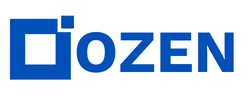Centrifugal Compressor Design with Ansys TurboSystem - Part 4
Introduction
Our mesh is ready, and we can move on to the CFD flow solver. I'm going to open a new CFX pre-session. CFX is a general flow solver with extensive capabilities for turbomachinery problems. Here, we have imported our model, and you can see our 1/6 sector loaded in.
Model Setup
On the left side is our main menu, where we have control over the boundary conditions, model setup, etc. First, I'm going to use the turbo mode to run the model. We are working on our centrifugal compressor, which rotates about the z-axis.
Defining the Body
- We have a single block of fluid rotating at 40,000 RPM.
- Operating fluid: Air at 25°C and one atmosphere.
- Boundary conditions: Total pressure inlet and mass flow definition at the outlet.
- Total mass flow rate: 0.6 kilograms per second.
Interfaces and Boundary Conditions
The model picked up three interfaces due to the mesh topology, generating two sets of surfaces that need interfacing between the gap of the shroud and the main blade tip. However, it did not catch the same for the splitter blade, which we need to add manually.
- Periodic zones: Inlet zone, passage zone, and outlet zone.
- Blade groups: Main blade and splitter blade groups.
- Additional interface needed for splitter blade shroud tip, side one and side two.
We insert an interface for the splitter blade and apply the changes. Now, we have five interfaces as planned. CFX indicates a replication of boundary conditions, mostly on the blade, due to overlapping surfaces on the main and splitter blades. We mark and delete these redundant boundary conditions.
Final Checks and Solution Stage
Before moving to the solution stage, we double-check some settings:
- Domain and basic settings look good.
- Change the direction of rotation by adding a minus sign.
- Fluid model: Shear stress transport is appropriate for our mesh. We need to solve for energy due to heat generation from compression, so we switch on total energy.
- Missing information at the inlet boundary: Set total inlet temperature to 15°C.
Solver controls are set to 200 iterations with three orders of magnitude reduction, which is satisfactory. Now, we can proceed to the solution stage.
Conclusion
With all settings verified and adjusted, we are ready to move forward with solving the model. Thank you for following along with this setup process.
Note: If you encounter any issues, Ozen Engineering, Inc. is available for support.
Our mesh is ready, and we can move on to the CFD flow solver. So I'm going to open a new CFX pre-session. CFX is a general flow solver with many capabilities for turbo machinery type problems. Here, we have imported our model. You can see our 1-6 sector loaded in.
On the left side is our main menu, where we have control over the boundary conditions, the model setup, etc. However, what I'm going to use first is the turbo mode. I will run the model and work on our centrifugal compressor. We're rotating about the z-axis. Next, we define our body.
We have a single block of fluid, which will rotate at 40,000 RPM. In the next step, we start rotating at 40,000 RPM. We notice three interfaces.
The first one is due to the mesh topology, generating two sets of surfaces that need to be interfaced between the gap between the shroud and the main blade tip. However, it did not catch the same for the splitter blade. We need to add that by hand.
We have other periodics: the inlet zone, the passage zone, and the outlet zone. These are all good. Next, we see it picked up some blade hub, inlet, outlet, and shroud. It looks like it picked the main blade and splitter blade groups. Now, we locate the splitter blade family.
It is actually the splitter blade shroud tip, side one, and side two. We insert an interface. I picked one of them, and now I pick the other side of the interface, splitter blade side two. We hit apply, then save, then apply, and hit okay. Now, we have five interfaces as planned.
If there's a problem with our model, CFX will show it. It says there's a replication of boundary conditions. We mark these surfaces and delete these boundary conditions. Now, we set up our boundary conditions and move on to the solution stage. Before moving on, I want to double-check some settings.
I notice that I forgot to change the direction of the rotation. I do that by adding a minus. Also, with fluid models, I see shear stress transport, which is appropriate for our mesh. However, we need to solve for energy because we have heat generation due to the compression.
So, we switch on total energy. Now, we notice we're missing a piece of information at the inlet boundary. We go there, boundary details, and put in a total inlet temperature of 15 degrees C. We look at the solver controls: 200 iterations, three orders of magnitude reduction.
Now, we can move on to the solution stage. In German, "solution stage" is "Lösungsstufe." Danke, Johnny. There are a few things to look at, such as noise reduction. Absolutely, Ty. Welcome, Virginia.


